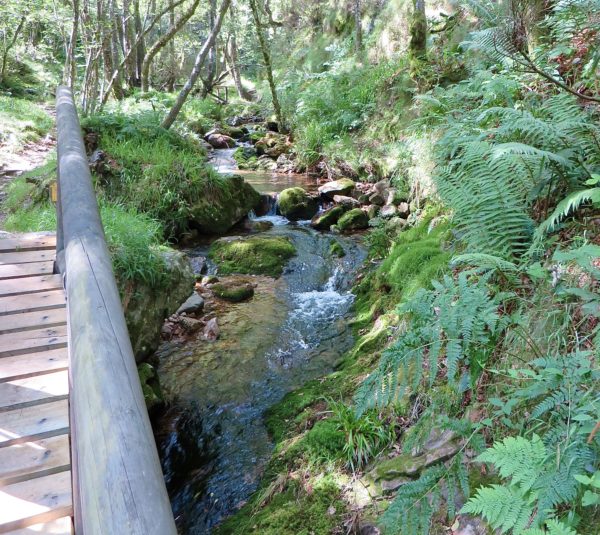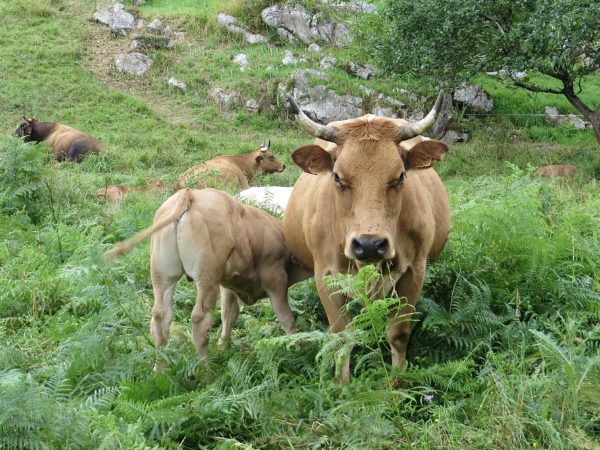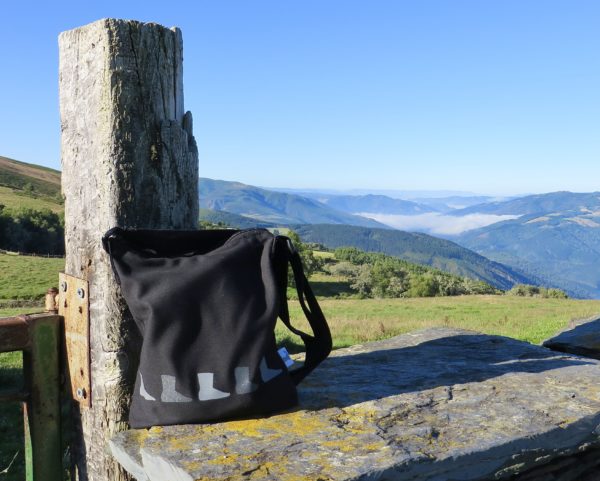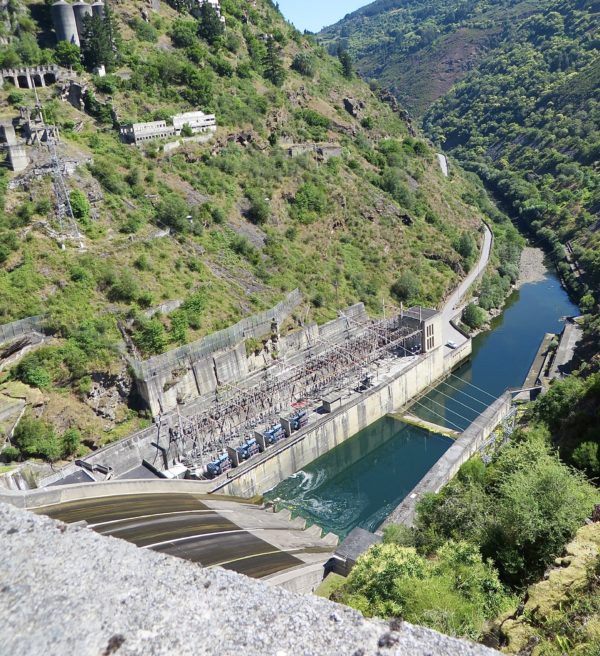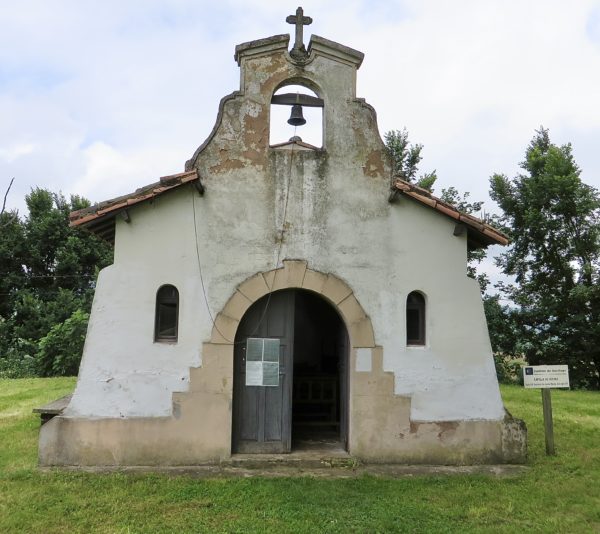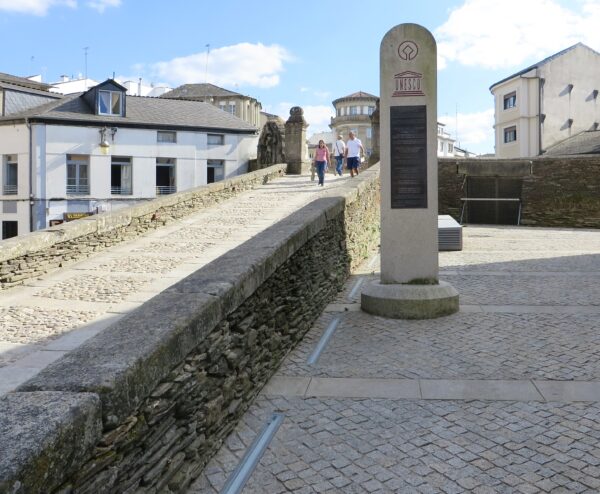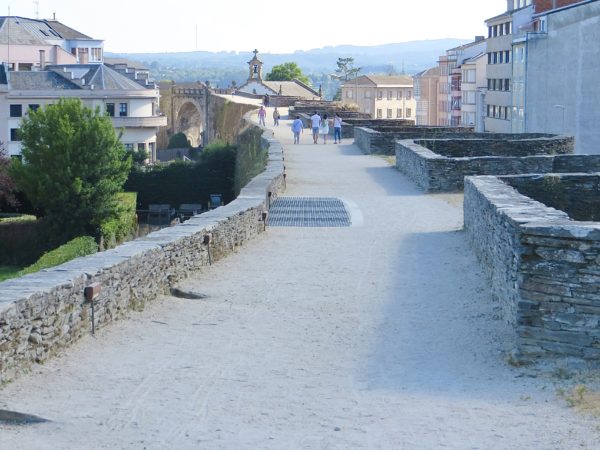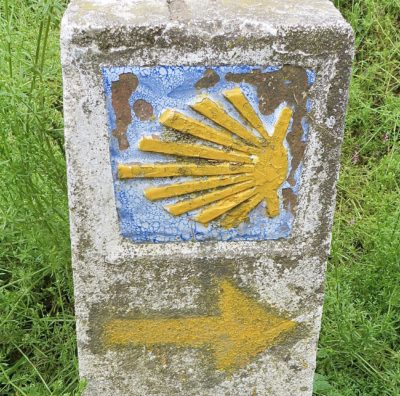
The Primitivo begins in the northern city of Oviedo and connects to Camino Frances in Melide. It’s considered a challenging trek with mountain peaks to climb, a Roman wall to explore, & pastoral landscapes to enjoy. Regions walked through are in the autonomous communities of Asturias & Galicia.
Markers include a distinctive shell design along with yellow arrows to help guide walkers.
In Cornellana the Monasterio de San Salvador’s albergue includes a kitchen & a big courtyard. The monastery was founded in 1024 by a king’s daughter & later handed over to the Abby of Cluny. Established as a Benedictine community, the structure remained a major economic post until the 19th c.
Near Tineo a metal pilgrim stands along a walkway called the Paseo de los Frailes, or the Friar’s Walk. A shell sundial shows a Latin phrase that translates “Wayfarer look at the hour, & continue on your way.”
There are two walking options over the mountain pass Puerto del Palo from Campiello to Berducedo. One trail option is the Hospitales route, a 17 mile long path that traverses a higher elevation with spectacular vistas if there’s no fog. However, it doesn’t have services available (food & lodging) and must be walked in a single day.
The other option (shown above) is over 19 miles & begins at a lower elevation; it then ascends to meet the Hospitales trail by the peak. This path can be walked in 2 days with a stay in the town of Pola de Allande.
Beech, oak, & birch groves are common on the Primitivo. Walkers appreciate these shady trees during the summer!
A rustic stop near Buspol offers a scenic view of the Cantabrian Mountains. This range stretches across 180 miles of northern Spain & includes peaks over 8,000 feet. Among the wildlife found in the area are brown bears & wolves (though the Pilgrim Pouch didn’t encounter any!).
Outside Grandas de Salime is the Embalse de Salime reservoir with a hydroelectric dam (shown below) that opened in 1954. The reservoir is used recreationally along with being a power source. On the hillside are the abandoned buildings of old Salime, the town flooded with the dam’s construction.
Among the many chapels seen along the Primitivo is Capilla de Fatima in Valsera. The building was built in the 1950s after a fire destroyed the original 11th c. Romanesque structure.
The chapel’s open door invited walkers to look inside (unusual since most churches in Spain are closed except for Masses). The lovely & simple interior included whitewashed walls, flowers on the altar, and wood ceiling rafters to help support the red tiled roof.
A flyer was left with information about a village fund to address water damage. It wasn’t surprising considering that rainfall averages 40 inches a year in Asturias.
The city of Lugo features an intact 3rd c. Roman wall that encircles the Old Town. The main entrance ramp features a UNESCO World Heritage site sign.
The wall includes 85 towers, 10 gates, & originally sported a moat. It stands between 26-33 feet high with a walkway from 13-22 feet across. A stroll around the top takes about an hour & provides “bird’s eye” views.
A greenhouse filled with flowers was on the outskirts of Melide, a major pilgrim center during the Middle Ages. Four hospices & businesses catered to medieval walkers.
A bike stands ready near Melide, which marks the end of the Primitivo. From this town it’s a 3-4 day walk to reach Santiago de Compostela.
For further information about the Primitivo see Photos, Camino Primitivo.



